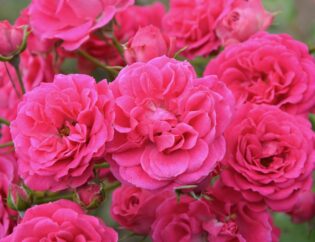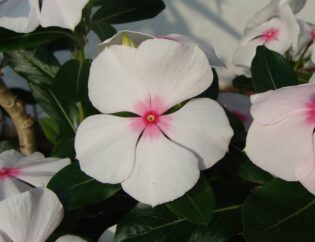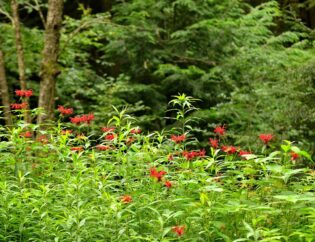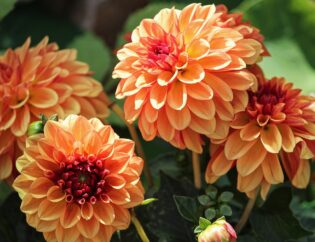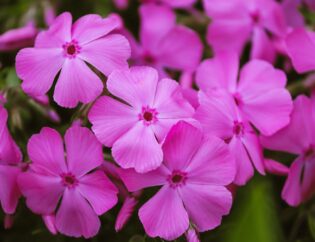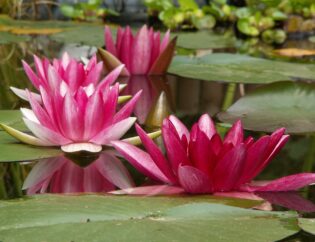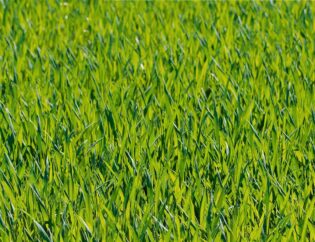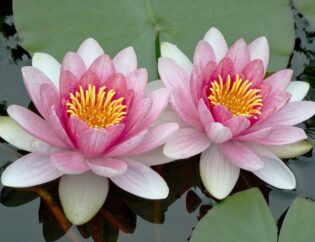
Landscape curbing or edging separates sections of the yard and gives it a sophisticated, clean appearance. It also serves the practical purpose of helping to keep grass and plants where they should be and not overgrowing into each other.
There are various options for edging materials that will create different looks and require different types of maintenance. Let’s explore!
1. Concrete Landscape Curbing and Edging
Concrete landscape curbing is super durable and gives a sleek, formal appearance to any yard. It can be installed either in blocks or poured to any desired shape. As it’s poured, control joints are created so that cracking will be contained. This helps preserve the beauty of the installation for years if not decades.
The only downside of concrete landscape edging is the price. Because custom shapes require special forms and pre-made blocks are heavy (and drive up transportation costs), it’s not the cheapest option. But the cost is well worth the professional-quality results.
2. Wood Landscape Borders
Wood is a more economical option and the beautiful colors and grain of natural wood lend a rustic flair to the yard. Unfortunately, wood doesn’t hold up very well and will begin to rot within a few years.
Wood can be treated with commercial chemicals and preservatives to make it last longer. However, many of these products are unsuitable for food gardens as the chemicals can leech into the soil and eventually the food.
If a wood border is being used to contain a raised vegetable bed, look to cedar and redwood for an option that is long-lasting even when untreated. Further, there are natural and non-toxic options like linseed oil that can be applied to extend the life of the wood.
3. Rubber Landscape Edging
Rubber landscape edging gives a yard a polished look. A nice feature is that they are often made from recycled materials that would otherwise languish at the landfill.
Rubber landscape edging is very durable and won’t rot or fade like wood or rust like metal. It’s also more crack resistant than concrete landscape curbing. The material is also a great choice for areas where kids will be playing, as the material is more forgiving than the hard edge of concrete or metal.
4. Brick Borders
Brick borders create a traditional look that is stunning in any yard. Aside from typical red bricks, there are pavers available in a variety of colors and styles. There are also a variety of installation patterns available. For example, herringbone and running bond are popular.
Brick tends to fall on the more expensive end, mostly because it isn’t easy to install. Cutting bricks to fit around curves and corners can be tricky and building retaining walls for a raised border require a certain amount of expertise. It’s also heavy, hard work to get a job installed.
5. Natural Stone Borders
Not surprisingly, natural stone is an excellent option for durability and is great for DIY enthusiasts. Homeowners can simply dig a trench and create a neat row of irregular stones for a rustic look.
It’s also possible to buy uniform cobblestone pavers that are easy to fit together along an edge. The pavers come in a variety of colors and styles that can be found at most home and garden centers.
Like bricks, keep in mind that stone is heavy to transport and can get expensive to install.
6. Plastic Landscape Edging
If these other options sound too heavy and complicated, plastic might be a good option. Not everyone loves the look of plastic edging, but it is economical and easy to install. It is even flexible to easily follow the shape of gently curving gardens.
Plastic is less durable than stone or brick and will show nicks from lawn tools and wear from the elements. It can become brittle with sun exposure and temperature fluctuations. Thicker plastic edging is more durable but also costs more.
7. Steel Landscape Edging
Steel landscape edging has a much thinner profile than the other materials we’ve mentioned. It is literally a long, thin strip of metal on its side, sticking up out of the ground between walkways and flowerbeds. It offers a modern look and is great for containing rocks in a pathway and the like.
Steel landscape edging is very hardy and, though thin, won’t get bent out of shape easily. Untreated steel slowly rusts, but it will take about 40 years for the rust to eat through. It is often used in Southwest-style rock gardens, where the patina of the steel is considered a positive feature.
8. Aluminum Landscape Edging
Aluminum landscape edging is another popular type of metal edging. It is softer than steel, making it easier to curve around flowerbeds or get bent by something heavy passing over it.
On the plus side, aluminum doesn’t rust like steel. However, some prefer the soft rusty patina of steel rather than the bright metal of heavy-gauge aluminum landscape edging.
Got a Project in Mind?
Here at Atlanta Turf & Tree, we take immense pride in building beautiful, lasting landscapes that double as living art. We have over 35 years of combined experience in the industry and understand the challenges unique to Georgia landscapes. Contact our landscaping services experts to get going on your project!
